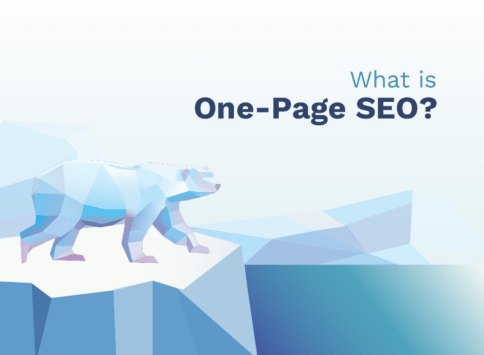What is On-Page SEO?
On-Page SEO purpose is to improve the technical and local SEO parameters of a single web page.

On-Page SEO and Off-Page SEO
When we talk about On-Page SEO, or On Site SEO, we refer to a set of techniques aimed at improving the technical and local SEO parameters of a single web page.
On-Page SEO optimization of a web page means both making it more user-friendly and navigable for search engines, such as Google, and improving the experience of the users who visit it.
On the other hand, Off-Page SEO is about all those non-technical and external actions that are taken to rank a web site domain as high as possible, e.g. keyword research.
Off-Page SEO helps both search engines and users to find relevant content for a specific query by working on keywords, phrases and everything related to the requested topic.
On and Off-Page SEO are essential for organic SEO: when On and Off-Page SEO are used correctly and at the same time, they are able to significantly help a website to rise in the ranking of the Search Engine Results Page (SERP).
To sum up, we can say that they are complementary elements: On-Page SEO works only on the “technical background” of a web page, while Off-Page SEO is more focused on exploring outside the web page in order to understand how to write relevant content.
SEO On-Page Optimization
We explained the differences between On-Page SEO and Off-Page SEO, speaking generally about their characteristics: now, let's see more specifically what marks On-Page SEO.
In order to understand how a web page performs, you can use many free and paid softwares: each of them will give you an audit with dozens of parameters, each with a rating.
These ratings then converge in an overall score (usually from 0 to 100) that gives you an idea of the technical performance of the analyzed page.
On-Page SEO Audit is generally different depending on the software you use, but more or less they all focus on these topics:
- Content
- Speed Performance
- PWA
- Social
- Accessibility
- Security
Web Page Content
The Content Section of an Audit usually refers to the technical design of content (code-side).
Therefore, the parameters you will have to check in this section will be all about HTML headings (h1, h2 and so on), titles, alt images, descriptions and so on.
Do not underestimate this section: be sure to use correct and relevant titles and descriptions, dealing with Off-Page SEO as well.
Web Page Speed Performance
The Speed Performance of an Audit is one of the most important Sections.
When users navigate on your page, they don't want to wait too long and they need all the elements to load pretty fast: when a page takes too long to load, most users leave it.
This is the reason why search engines penalize slow web pages in the ranking.
While all parameters are important and should be considered, the ones you should pay most attention to are the Core Web Vitals:
- First Input Delay (FID)
- Largest Contentful Paint (LCP)
- Cumulative Layout Shift (CLS)
Progressive Web App
Building a Progressive Web App (PWA) is a very useful strategy to increase the score of your website, as well as to provide your users with a different experience.
Some of the parameters in this audit are in common with those of other sections, like the viewport or the https redirect.
Social
The Social Performance section of an On-Page SEO Audit allows you to optimize the Open Graph meta tags, encouraging sharing and significantly increasing social traffic to your website.
You can also check the Facebook engagement by monitoring the interactions with your Facebook page.
Accessibility
Parameters of the Accessibility section are focused on best practices to improve the experience of users that use assistive technologies: for instance, these parameters are related to the usage of ARIA or the improvement of keyboard navigation and semantic controls.
Security
User data must always be protected, which is why the parameters of the Security section are crucial in On-Page SEO.
Among them, there are malware and vulnerabilities check and the use of HTTPS protocol.
On-Page SEO Audit
Every page of your website that you want to improve, should be analyzed. To do so, you can use SeoChecker's SEO Audit Tool: simply write the URL that you want to analyze in the bar and you will be able to check information about all the parameters mentioned before.